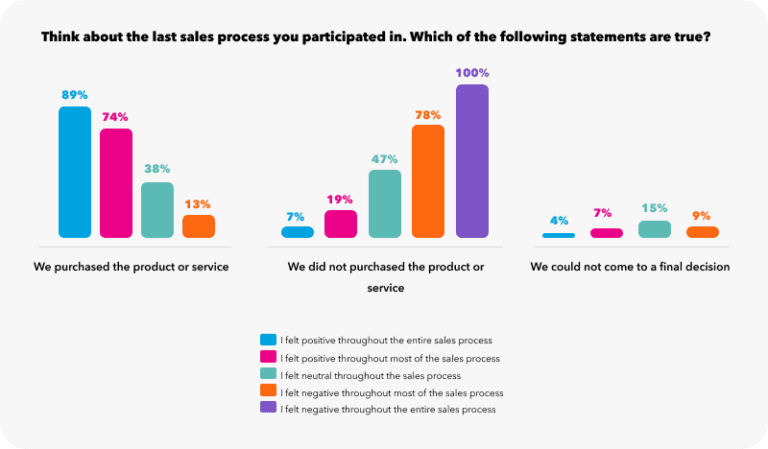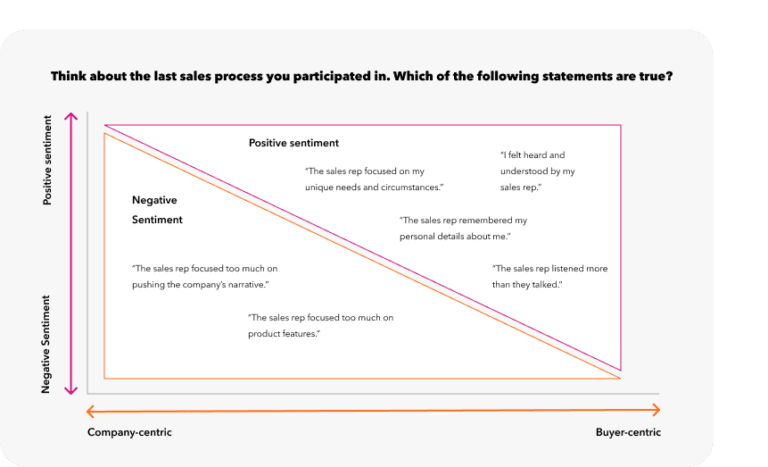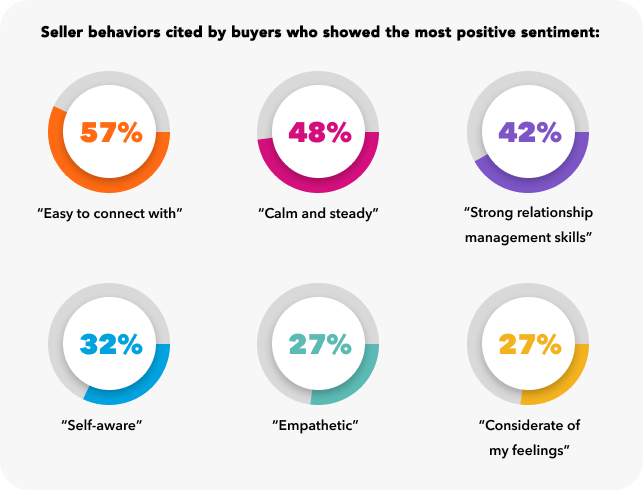When you sell over video, earning and keeping buyer attention is exponentially more difficult.
Why? Well, virtual buyers are more distracted, for starters.
We surveyed 529 B2B buyers for our 2023 Virtual Selling Report, and found that 29% of buyers admit to multitasking during their last video sales call.
But, let’s be honest: more than 1 in 3 buyers answer messages, search online, and review emails during video meetings.
 One study of Microsoft employees showed that people multitask on remote meetings as a coping mechanism to deal with the stress of back-to-back video calls. Can you relate?
One study of Microsoft employees showed that people multitask on remote meetings as a coping mechanism to deal with the stress of back-to-back video calls. Can you relate?
Thought so. We’re all human, after all.
Hard As It Is, Sellers Are Eager to Earn and Keep Buyer Attention
As part of the same study, we surveyed 117 B2B sellers. We asked the panel of sellers “Which of the following external challenges are most important for you to solve?”, and their top three answers were:
- Earning buyers’ attention
- Building trust and rapport with buyers in a virtual environment
- Keeping buyers’ attention (beyond the first meeting)
 If you can’t get and keep your buyers’ attention, you can’t build trust and rapport—so these items are tightly intertwined.
If you can’t get and keep your buyers’ attention, you can’t build trust and rapport—so these items are tightly intertwined.
So how exactly do you earn and keep buyer attention when selling over video—so that you’re able to build trust and rapport?
You drive positive buyer sentiment.
The Impact of Buyer Sentiment on Deal Outcomes
Before we share specifics on how to drive positive sentiment, we want to quickly explain why sellers should care about buyer sentiment in the first place.
Our research shows a relationship between buyer sentiment and deal outcomes.
We asked our panel of B2B buyers to think about the last sales process they participated in and select the option that best describes how they felt throughout it.
We then cross tabulated their answers by whether or not they purchased.
As you can see, sellers who keep their buyers feeling positively throughout the entire sales process are most likely to see positive deal outcomes, while sellers who fail to drive positive buyer sentiment are least likely to see favorable deal outcomes.
(The blue bar represents the most positive sentiment, and the purple bar represents the least positive sentiment.)

Pay attention to the middle ground: the pink, green, and orange bars. When sentiment declines at any point during the sales process, so does the likelihood of purchase. So when buyer sentiment dips on a video call, you’ve got to act quickly to turn things around.
Seller Actions That Impact Buyer Sentiment Levels
Buyers who expressed the most positive sentiment (those who felt positive throughout all or most of the sales process), said the following about their sales rep:
- I felt heard and understood by my sales rep
- The sales rep focused on my unique needs and circumstances
- The sales rep remembered personal details about me
- The sales rep listened more than they talked

Buyers who expressed the least positive sentiment (those who felt negative throughout all or most of the sales process), selected the following items:
- The sales rep focused too much on product features.
- The sales rep focused too much on pushing the company’s narrative.
The Takeaway
To maintain positive sentiment across meetings, sellers need to be buyer-centric rather than company-centric.
Cassandra Anderson, VP of Revenue Operations at Drips, talks about this concept on episode 17 of Uniphore’s B2B EQ podcast:
“As a seller, you have an intention to sell some stuff, and to be effective at your job. A buyer has the intention of looking like a hero at their company and being able to solve some big problem … As a buyer, if I’m looking to solve my problem, my expectations are that you’re not going to give me a 10-minute PowerPoint and a five-minute brief about your company; you’re going to ask questions to understand how your product can solve my problems, and then you’re going to show [your product] to me.”
But like Anderson pointed out, some sellers show up to meetings expecting to follow a rigid sales script and tell the buyer why their product is the best.
“If buyer and seller intentions aren’t aligned—and if the expectations that derive from the intentions aren’t aligned—there’s going to be a breakdown,” Anderson said.
Distinguishing Buyer Outcomes From Intentions
Cassandra Anderson - B2B EQ - Episode #17 JUNE 2, 2023
Seller Behaviors That Impact Buyer Sentiment Levels
Buyers in the group that felt the most positive were significantly more likely to describe their seller as:
- Easy to connect with
- Calm and steady
- Self-aware
- Empathetic
- Considerate of my feelings
Buyers in this group were also significantly more likely to say their seller had strong relationship management skills.

The Takeway
Don’t let anybody tell you that emotional intelligence and EQ don’t matter in sales, because clearly EQ and soft skills play a role in driving positive sentiment—and better deal outcomes.
Emotional intelligence enables sellers to be more buyer-centric, which is what buyers today expect.
Overcome The Four Forces That Make Virtual Selling Difficult
Download Uniphore’s 2023 virtual selling report to learn about overcoming the top virtual selling challenges. The report includes 10 actionable recommendations for virtual sellers to help you close more deals and hit your numbers.





